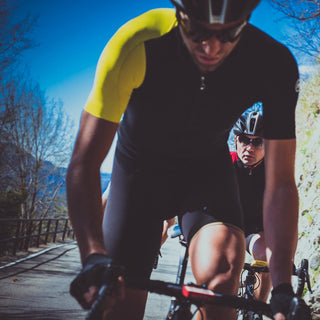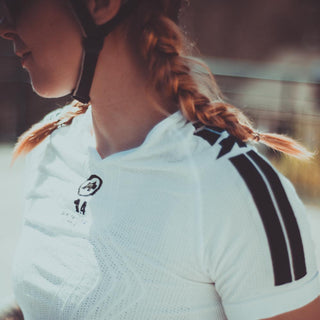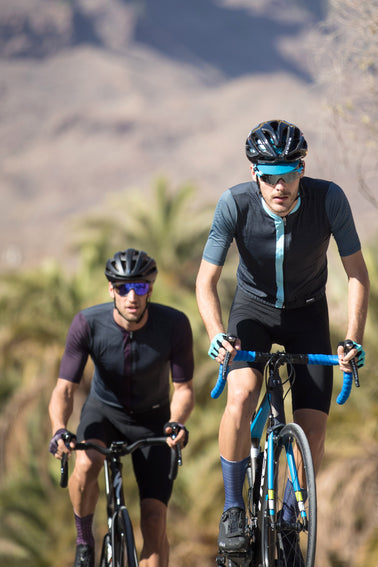We've discovered that enjoying winter cycling requires a solid understanding of layering. To keep yourself dry, you should put on a fleece midlayer for warmth, an outer, windproof and waterproof layer for protection from the weather, and a base layer that wicks away moisture. Remember to wear a cap underneath your helmet, windproof gloves, and thermal socks to protect your extremities. Making the correct fabric choices—such as fleece, Gore-Tex, and merino wool—will keep you toasty, dry, and comfortable for your ride.
You're also set for a fun and safe trip if you have the appropriate visibility equipment and take good care of your clothes. If you follow along, you'll learn how to maintain everything to maximise your winter cycling experience.
Layering Fundamentals
The secret to remaining warm on winter bike rides is to become an expert layerer. The key to choosing clothing for cycling in the winter is striking a balance between breathability and warmth. To prevent sweat from seeping into your skin and leaving you feeling clammy and chilly, you begin with a base layer that wicks away moisture. To trap heat, you then apply an insulating layer. Here's where you can switch it up according to the weather: wear a larger thermal layer as it becomes colder or a lighter fleece on milder days.
Your outermost layer serves as a wind- and water-resistant barrier. A jacket that is waterproof, windproof, and breathable is necessary. In addition to keeping us dry and preventing chilly gusts, it is sufficiently porous to allow extra heat to escape. You now know that layering wisely is more important in winter riding attire than simply packing on the garments. Even in the coldest months, you can control your body temperature, keep dry, and enjoy your rides by modifying these layers. With this strategy, you may adjust to shifting circumstances and never overdress or underdress.
Choosing the Right Fabrics
Now that the significance of layering for winter riding has been established, it is equally vital to talk about the kinds of textiles ideal for these layers. You should search for breathability, moisture management, and warmth fabrics.
Let's start by discussing the foundation layer. Select fabrics that are made to wick away moisture, such as synthetic fabrics or merino wool. By removing sweat from the skin, these materials keep us warm and dry. Particularly, Merino wool has the added advantage of being naturally odour-resistant, which is fantastic for those extended rides.
Fleece is your go-to fabric for the middle layer, which is all about insulation. In addition to being breathable and lightweight, it offers great warmth without being bulky. The temperature and ride intensity can be used to modify this layer.
A breathable, windproof, and waterproof fabric should be used for the outer layer. This is essential for weather protection and to avoid overheating and sweat accumulation. Seek fabrics like Gore-Tex or comparable technology that offer breathability and protection.
By selecting the appropriate materials for each layer, you may maximise your enjoyment of winter riding by staying warm, dry, and comfortable.
Protecting Extremities
Winter cycling requires protecting your extremities from the cold, layering, and selecting appropriate clothing for core body warming.
Your hands are where we begin. Windproof, high-quality gloves are essential. They should fit our fingers snugly without being too tight, allowing for some airflow to help keep our fingers warm. We advise wearing thermal socks and waterproof riding shoes to protect your feet. Adding toe or whole shoe covers will keep the cold at bay if the weather gets too bad.
The significance of a well-fitting headband or headgear beneath your helmet should not be disregarded. Your ears should be adequately covered because they are particularly susceptible to chilly breezes. A warm, lightweight neck gaiter that covers your lower face when pulled up is very useful when it's chilly outside.
Finally, you also need to safeguard your eyes. Clear or yellow-tinted cycling glasses provide better visibility in low light and help block out wind without obstructing your vision.
Visibility and Safety Gear
To have a safe and secure winter cycling experience, you must have appropriate clothing, safety gear, and good visibility. Visibility is important because the days are shorter, and the weather is generally gloomier. The first thing you should do is wear reflective apparel. To increase your visibility to cars and pedestrians, wear gloves, leggings, and coats with reflective patches that flash brilliantly in headlights and streetlights.
We don't stop there, though. Don't forget to add lights to motorcycles. It is imperative to have a red light in the back and a bright white light up front. These aid in more than just visibility; as the days become shorter, they make it easier for you to see your destination. To draw attention more successfully, go for lights with several modes, such as a flashing setting.
You also view helmets as a component of your protective equipment. In addition to shielding your head, many helmets nowadays have integrated reflective materials and lights. They are a multifunctional piece of gear that improves your safety and visibility.
Finally, you don't undervalue the influence of striking accessories. In low light, reflective or brightly coloured leg bands, arm bands, and even bike frame tapes can make a big impact. No matter how gloomy or dark the winter day gets, you can be sure you've noticed and are safe on the road by dressing you and your bicycle in visibility clothing.
Maintenance and Care Tips
Let's focus on maintaining your equipment in good shape with some maintenance and care advice after ensuring you're visible and safe while driving. It is imperative that you routinely inspect your winter cycling apparel for symptoms of deterioration. When you're miles away from home in the bitter weather, you don't want a little rip to become a significant issue.
You always air out your equipment after a ride, especially if you exert yourself. Wet clothes can harbour microorganisms that can cause unpleasant smells and even deteriorate the material.
The washing guidelines listed on the labels of your items should always be strictly followed. Most winter riding gear is composed of special materials that need to be cleaned gently to maintain their ability to withstand the weather. Also, avoid using fabric softeners since they can weaken the fabric's capacity to draw moisture away from your skin.
To sum up, you now know that wearing for winter riding involves more than just being warm—it also involves selecting appropriate textiles, layering wisely, and protecting our extremities.
Remembering the significance of safety gear and visibility, particularly during shorter, darker days, is imperative. Naturally, taking care of and maintaining your equipment guarantees you're always prepared to go, weather permitting.




